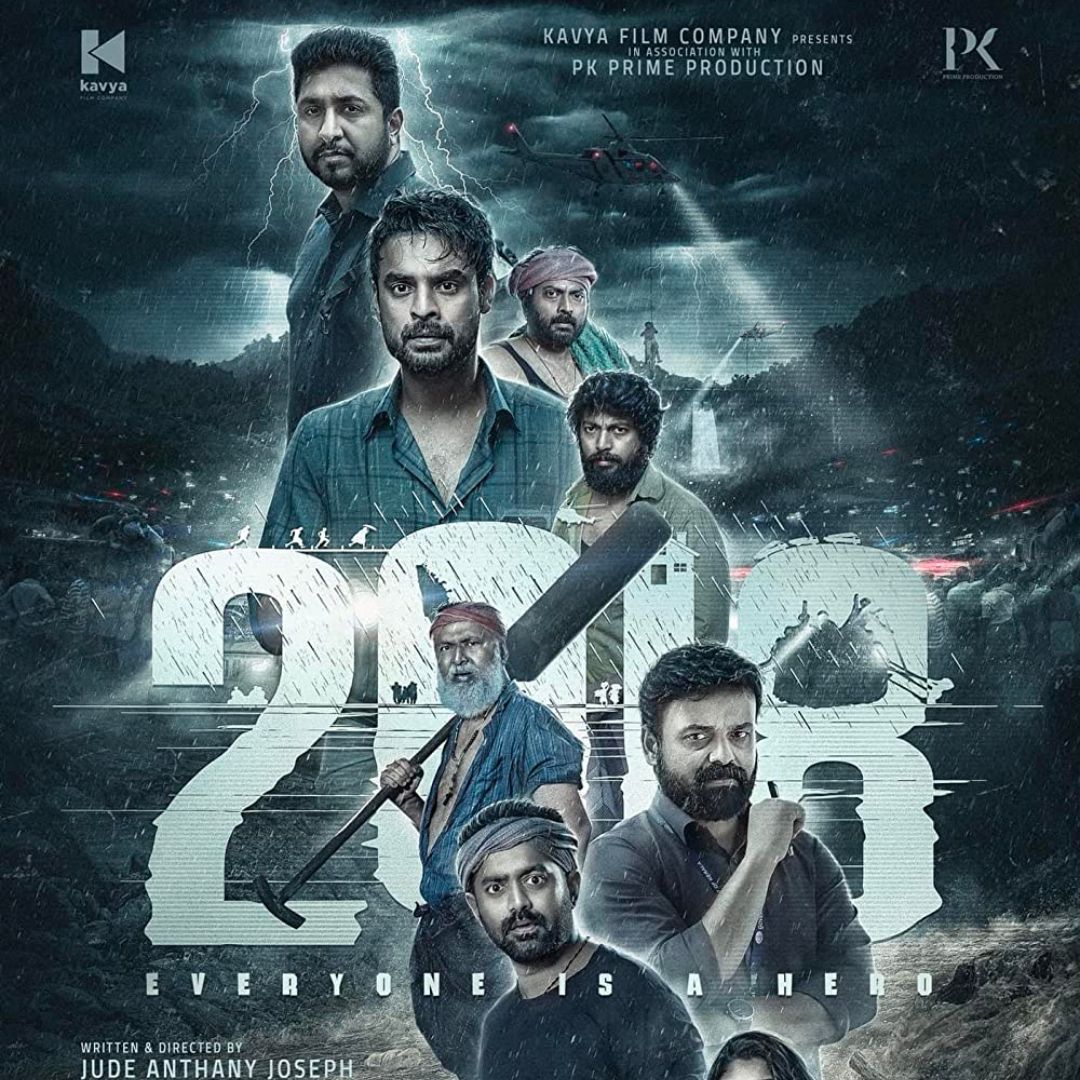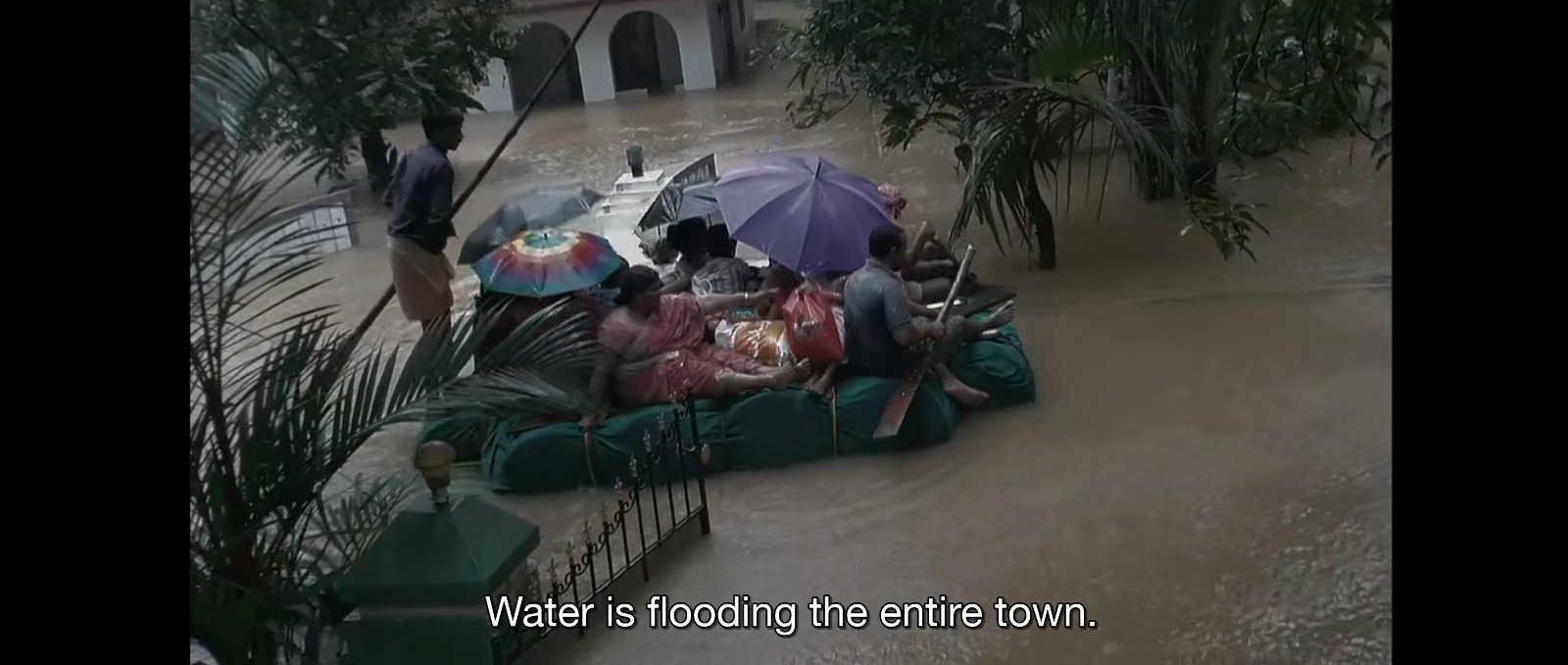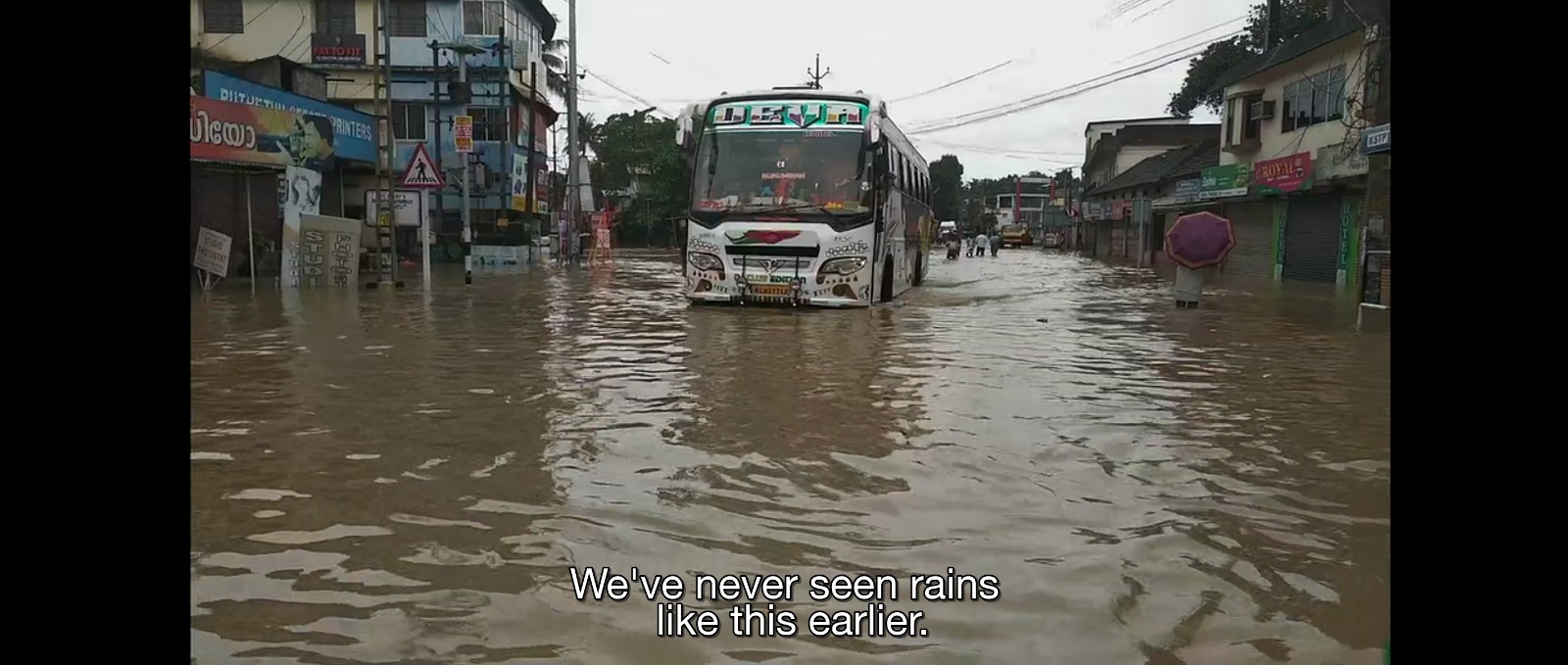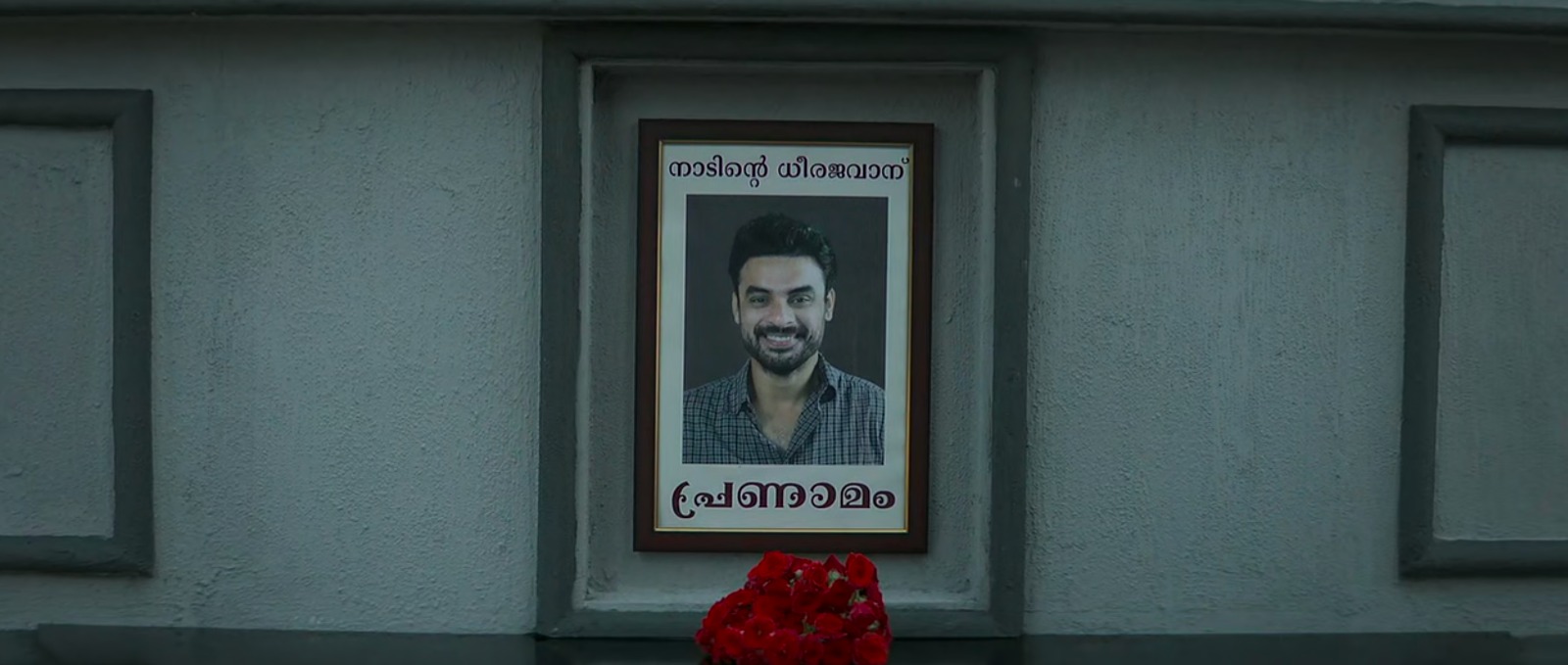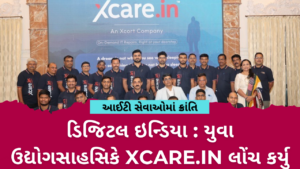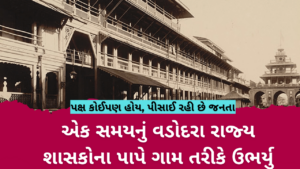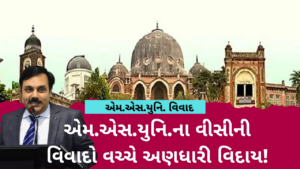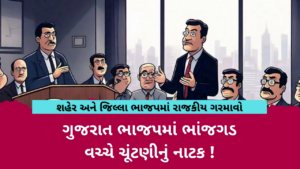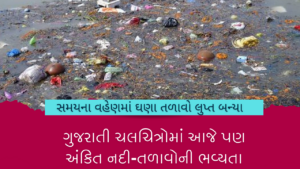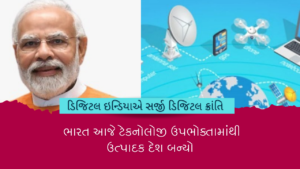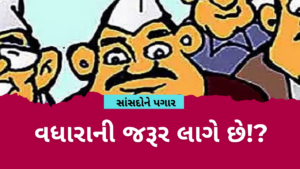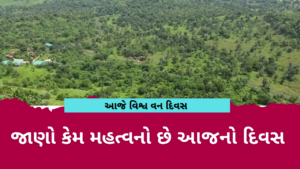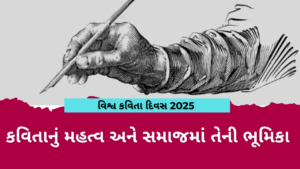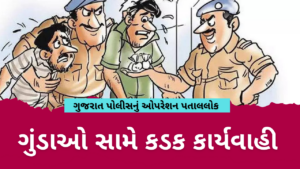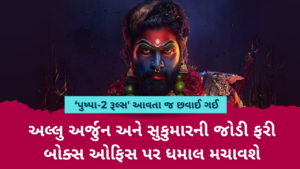‘Every calamity is just news until it hits us’
The Film Federation of India (FFI) officially announced the entry of Jude Anthany Joseph’s Tovino Thomas starrer survival film based on the 2018 Kerala Floods: ‘2018: Everyone is a Hero’ as India’s official entry for the Academy Awards 2024. This Malayalam-language film is reminiscent of the Nootandile Pralayam (transl. Flood of the Century), the deluge that broke the spirits, hearts and hopes of the citizens of ‘God’s Own Country’ in 2018.
Let me now tell you why I feel, and very strongly feel that this 2h28 minute masterpiece by Jude Anthany Joseph, where he truly outdid himself, deserves an Oscar. This film broke my heart; there are no surprises there as it is rife with the depiction of reality as it is and not as a jumble of doctored facts that are used as propaganda to rile up a portion of the audience for validation or otherwise (No, I’m not talking about The Kerala Story……or am I now). Although, I’ll have you know that this film had to compete with 20 other films to emerge as the only entry from India. A few names among these 20 other films will shock you: The Kerala Story (I am flabbergasted), Rocky Aur Rani Kii Prem Kahaani ( I have lost faith in humanity), Mrs Chatterjee Vs Norway (well-deserving), Balagam (Telugu), Vaalvi (Marathi), Baaplyok (Marathi) and August 16, 1947 (Tamil).
When I say Anthany Joseph has depicted every aspect of the disaster as it is, I mean all emotions, prayers, looks of despair, dialogues, music and facts all culminating in one big recount of the destruction that ravaged the state of Kerala in 2018, leading to more than 480 lives lost, leaving more than five million displaced, injured and traumatized and a large amount of livestock and property left damaged with the government under fire for poor management.
Recounting the horrors of a century ago: the Great Flood of ‘99
The film starts with a commentary on the Great Flood of ‘99, which was one of the most devastating deluges faced by Kerala early on, caused by the overflow of the Periyar River caused by a breach in the Mullaperiyar Dam due to continuous rainfall, leaving an entire district submerged (Munnar was completely submerged) and destroying the first Monorail system: Kundala Valley Railway system, that connected Munnar to other towns.
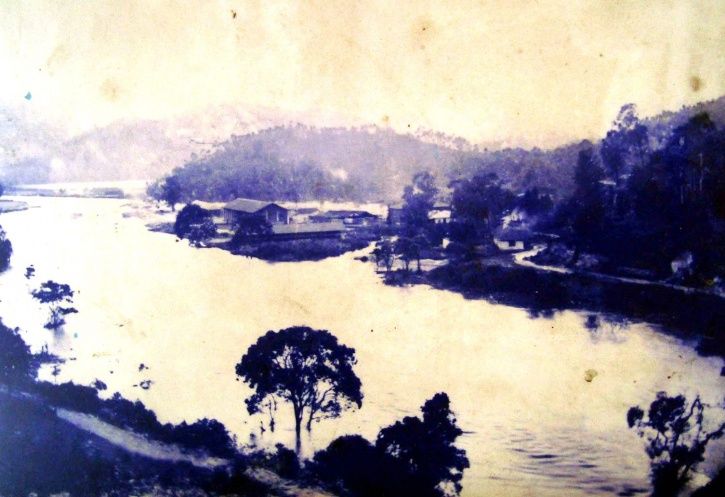
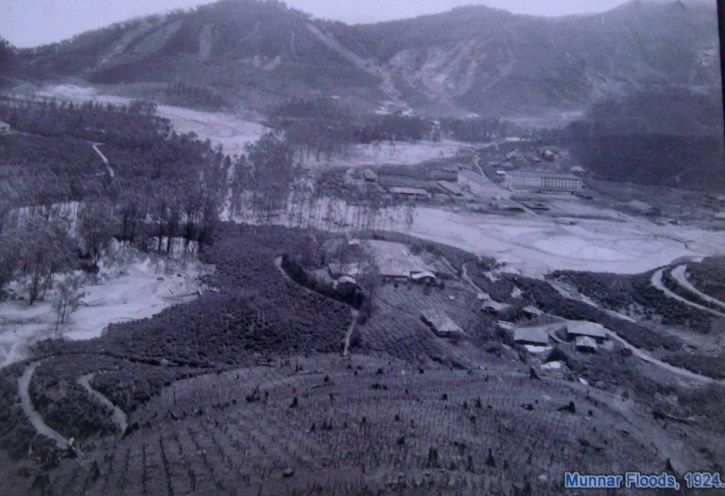
This disaster first occurred in the Malayalam Year (ME) 1099, which is the year 1924 in the Gregorian Calendar, when the month of July saw severe rainfall in the state (about 3368 mm), especially in the areas of Travancore (now, Thiruvananthapuram) and Cochin (now Kochi) that severely damaged, as a hill town Karinthiri was completely eroded. Districts of Ernakulam, Idukki and Kottayam faced substantial damages, with casualties reportedly reaching a 1000-count death toll, severe damages in property such as Churches, homes, government and panchayat offices and loss of livestock.
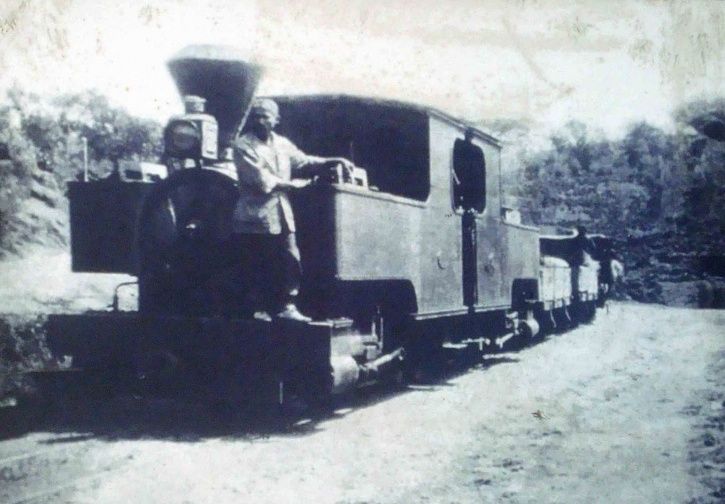
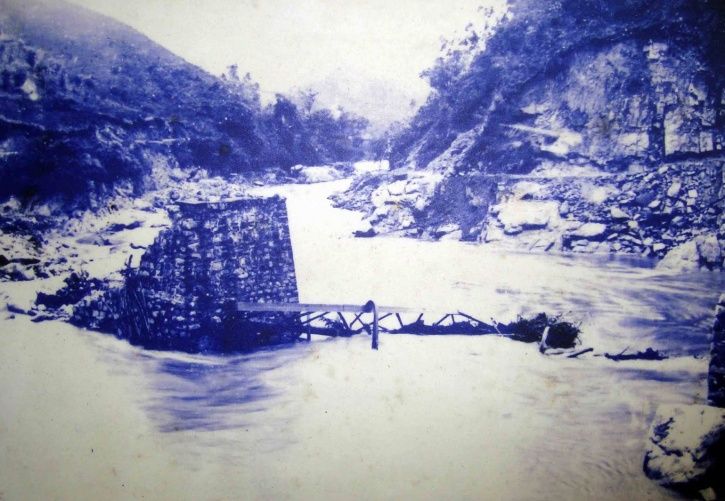
As the movie recounts this disaster, a man can be heard saying that in the aftermath of the floods, Kerala was equipped with better infrastructure, disaster management systems and the state is well prepared to take on any such challenges. This aspect however, has been the subject of debates since then as in the aftermath of the disaster, a few solutions were brought about by the government, such as: an alternate route from Ernakulam to Munnar was constructed and Mr. Valentine, a British Surveyor oversaw this operation. This new road, which was completed by 1931, was inaugurated by Regent Queen Sethu Lakshmi Bayi on March 31, 1931. However, Kerala is known for its lack of preparation ahead of such disasters and the CWC (Central Water Commission) despite having flood monitoring systems, does not use flood forecasting systems effectively, which only increases the state’s vulnerability to such dangers.
Therefore, we wonder, if anybody was surprised that poor management purportedly led to the 2018 Floods?
Water- a common element, need, want and evil
The film starts from July 21st, 2018, with everything seemingly at normalcy across several locations: Abu Dhabi, Madurai highway, Kochi, the Kerala Government Information Centre in Alappuzha. In the small village of Aluva, we are introduced to Anoop (played by Tovino Thomas), an ex-military man who is currently awaiting his visa clearance for Dubai, in search of a job. Anoop, skilled to the brim with all that he learned from the army, is essentially presented as the ‘hero’ in the film, although the title says “Everyone is a hero” and does not hint at a singularity. However, this is Indian Cinema and we truly believe in the idea of a ‘One-man-saves-all’.
The film shows the daily-life activities of citizens from different locations, Anoop works at a Pettikada (transl. Similar to a Paan shop that sells tea, biscuits and other basic provisions) run by a visually impaired Bhasi Chetta.The scene shifts to Rameshan Chetta, an IT Specialist in Abu Dhabi who is currently facing a leave crisis and marital issues at home, but is contacted by Anoop to help out with his visa. The scene shifts to Madurai Highway where a local lorry driver Sethupathi is seen damaging the side mirror of a Malayali journalist reporting on-field. Noora, the journalist, is covering the water crisis faced by a drought-stricken village in Tamil Nadu, where villagers can be seen wishing for the dam to fill up as they have to walk kilometers to fetch water. The scene shifts to Kochi, where a shoot for an advert takes place, as Nixon (Popeye) can be seen performing in artificial rain for the shoot. The scene shifts to the government information center in Alappuzha where Revenue Department employee Shaji can be seen handling the latest information on the issue of rainfall in the state.
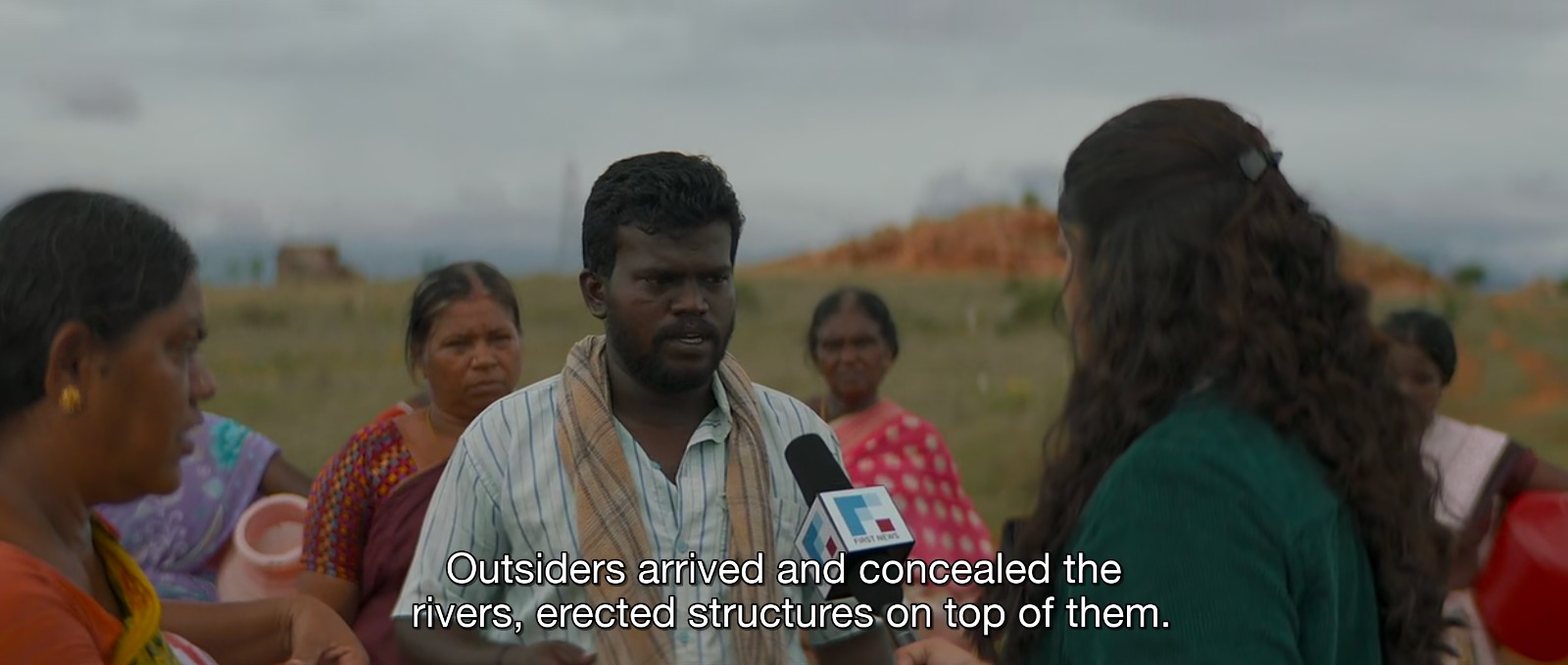
A common element in all these scenes was the rainfall and the lack thereof and how it impacted various citizens. As rains grace Kerala, the search for missing fishermen at sea is underway where in an extremely gripping scene we can see the anguish of fishermen, the uncertainty of life and death looming in the air as they await their fates, the despair in the eyes on all of them as heavy storms hit the sea in Kochi, with severe rainfall. The families of the fishermen, especially the women and children can be seen huddled together, praying for their husbands’ and sons’ safe return. They can be seen distributing and enjoying meals in order to distract themselves from the turmoil their minds and hearts are in.
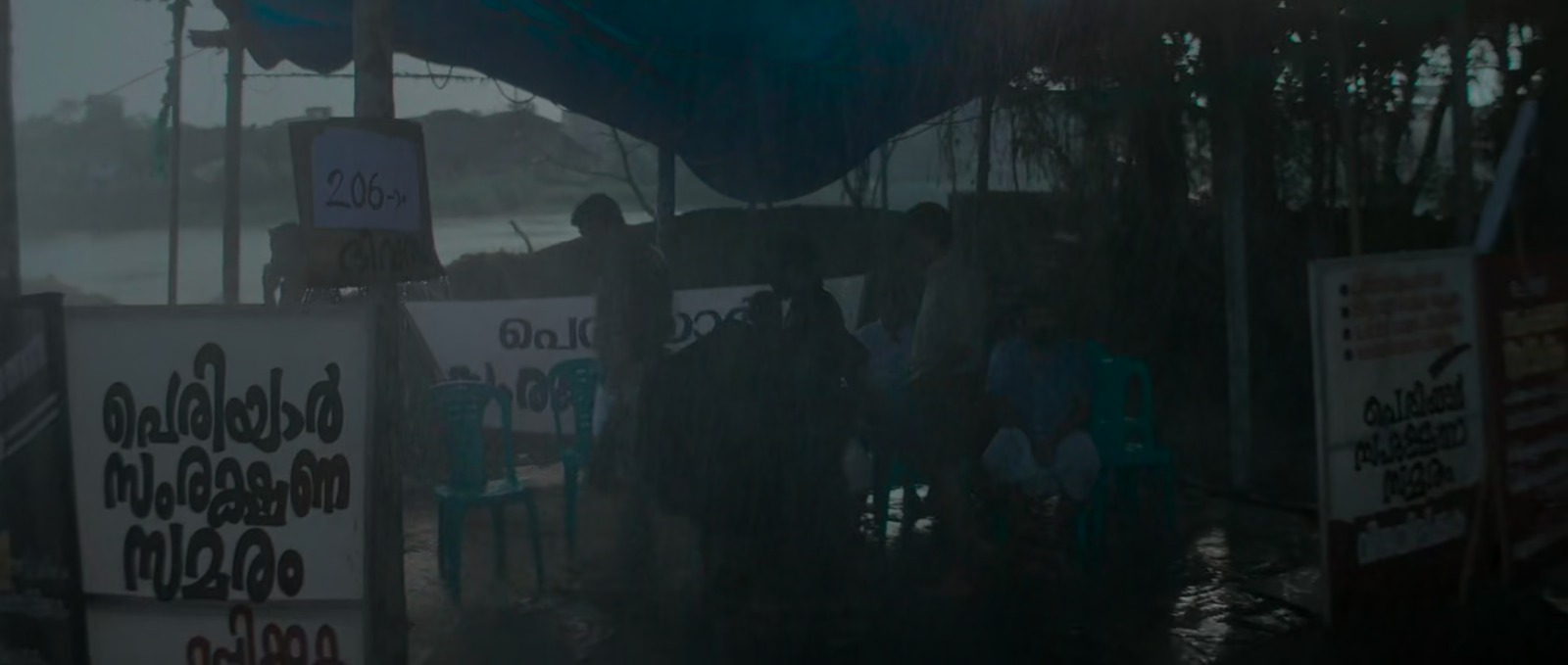
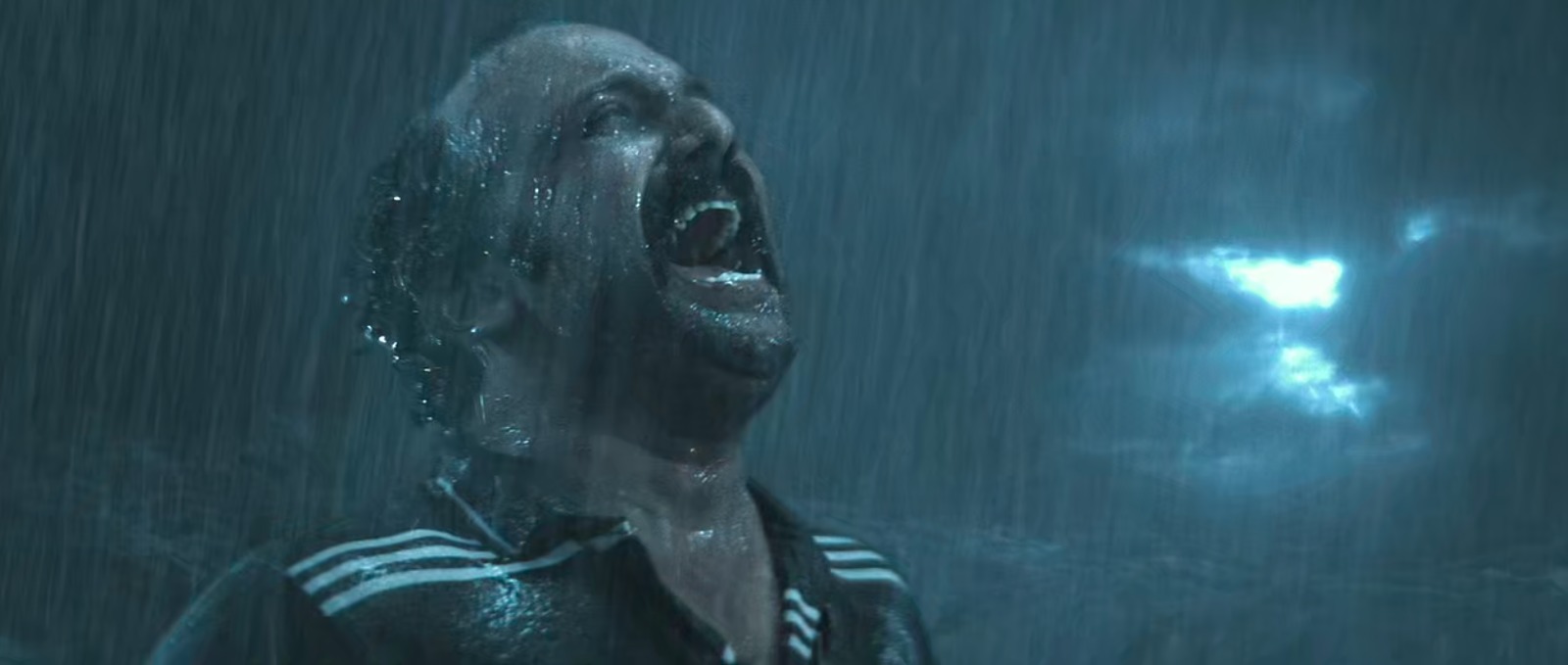
The fishermen at sea manage to save themselves from an incoming goods ship that may have wrecked their boat, had they not been careful.
August 9, 2018 now, heavy rainfall has hit the town of Aluva, the Periyar River Conservation protest is brewing, and the shutters of Idukki Dam will be opened up after 26 years as rainfall increases.
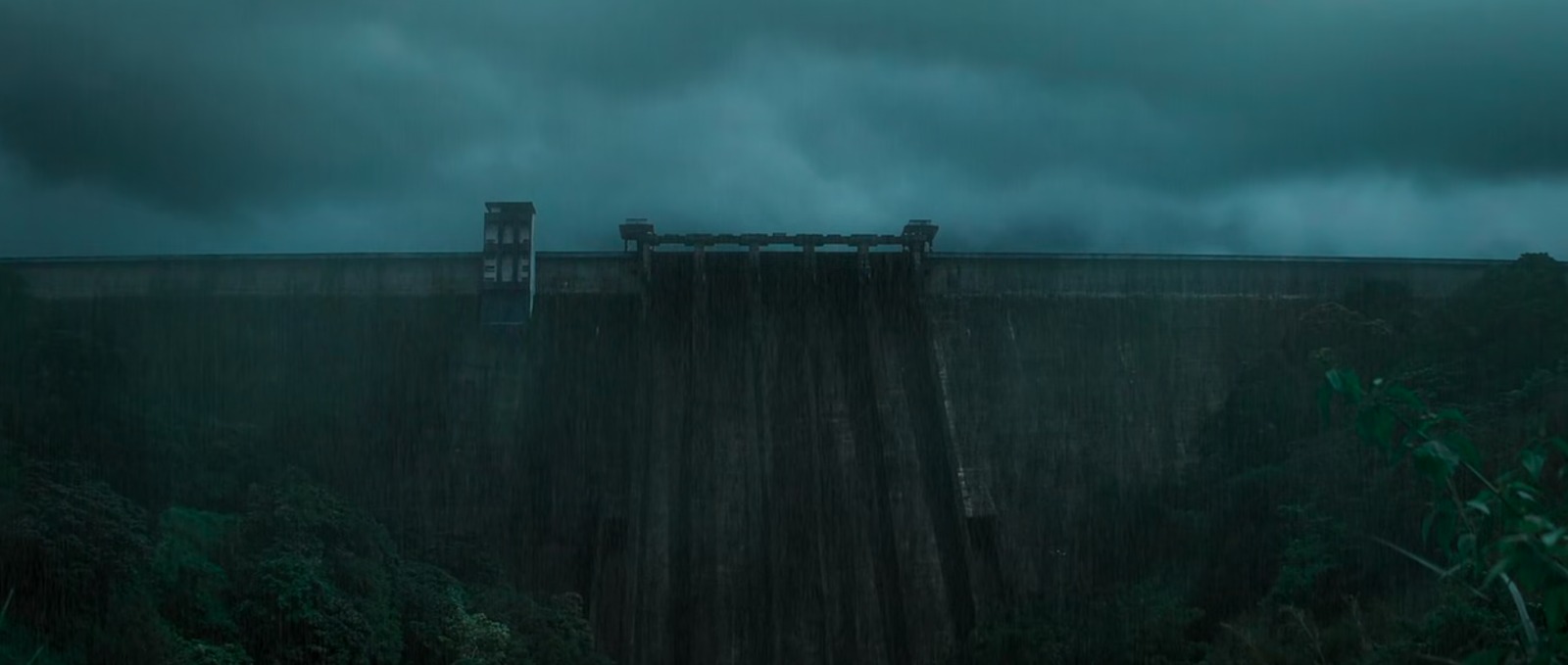
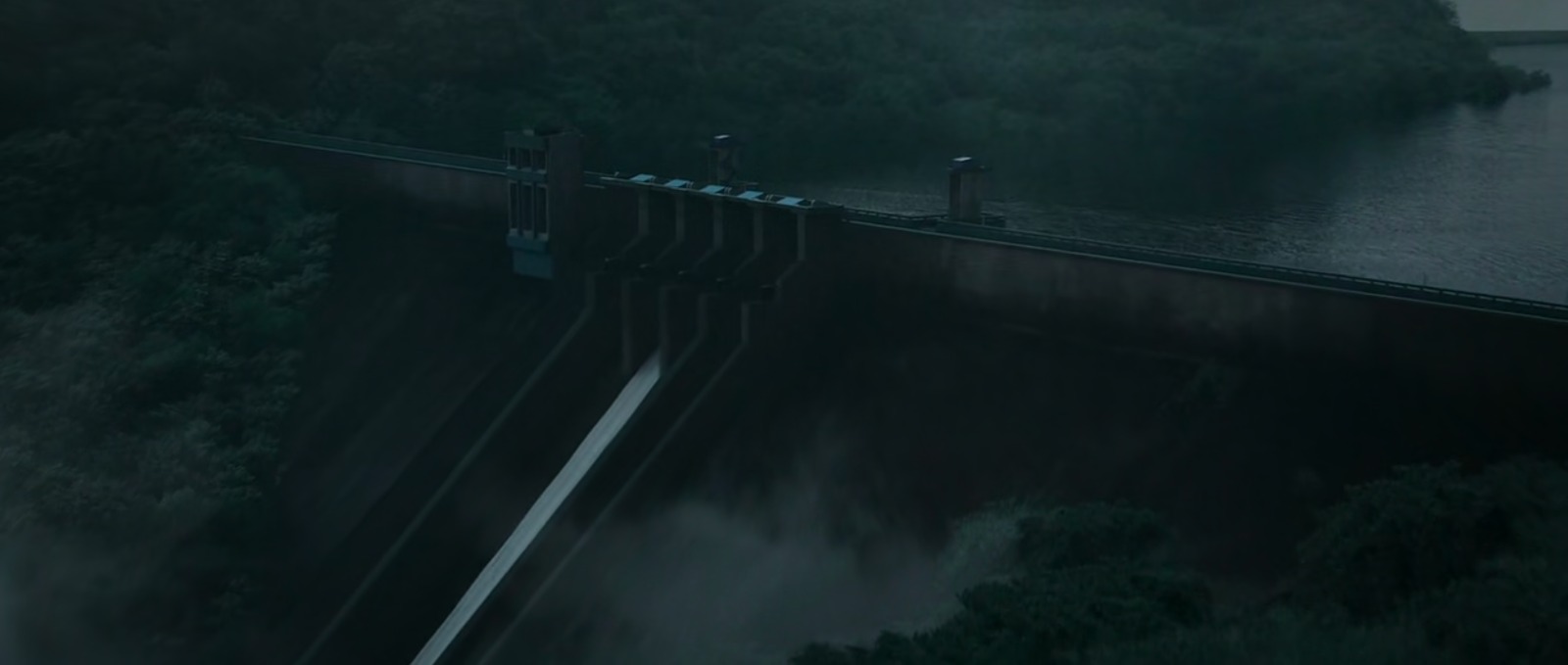
The stinking, impoverished fisherfolk vs middle class urban divide
Nixon returns home to his family, asks them to meet the family of the woman he wishes to marry. However, Mathachan and his family are insulted as they are told that because there is no residential certainty for the fisherfolk community, he does not wish to get his daughter married to Nixon.
Upon returning home, everybody is glum as they refuse to eat because they are upset at being called ‘lowly’. Tina, Winston’s wife berates them for being upset at such a trivial matter. Tina’s speech here plays a major role in highlighting the differences between what the fisherfolk community are in reality and how they are portrayed as. She says, they may be poor, they may live among the fishes and stink sometimes but at least they are happy, they do not lack humanity and they are always united. If there arises any crisis they all stand together and stand with one another and for one another, something that middle and upper middle class individuals such as that family will never know or will never face.
The real heroes in the time of crisis
Rainfall has intensified now, with waterlogging reported in several areas of Kerala, as the gates and the shutters of Idukki Dam open and the water pressure and flow has been shown to be very intense. Low-lying houses in the nearby areas have been evacuated, with most of the families being sent to relief camps. As the days pass by, the news of two cyclonic depressions forming is reported and rainfall intensifies severely, with almost several localities flooded.
The Periyar Dam protest has turned violent as due to lack of media coverage, they decide to make bombs and bomb the factories to catch the attention of the media and citizens. The bombs were reportedly being transported by Setupathi, who was paid double for the illegal task.
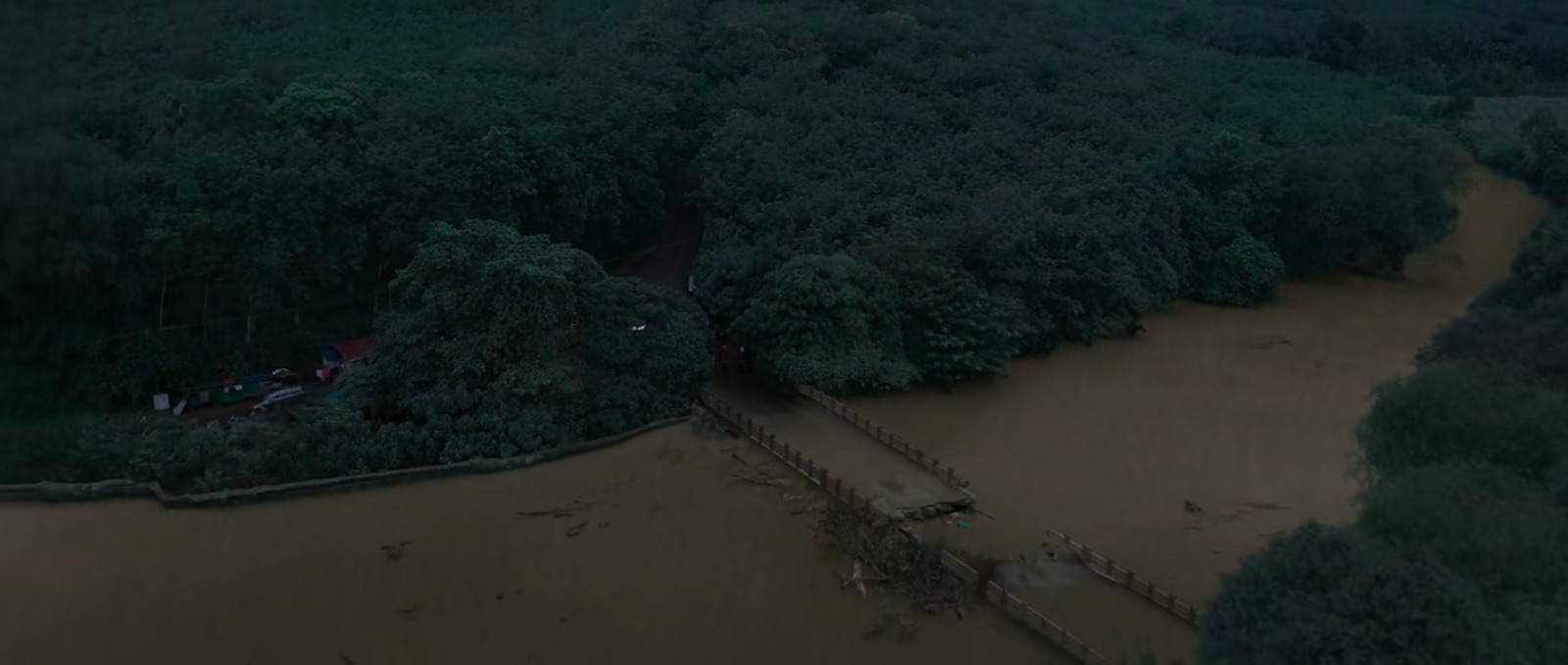
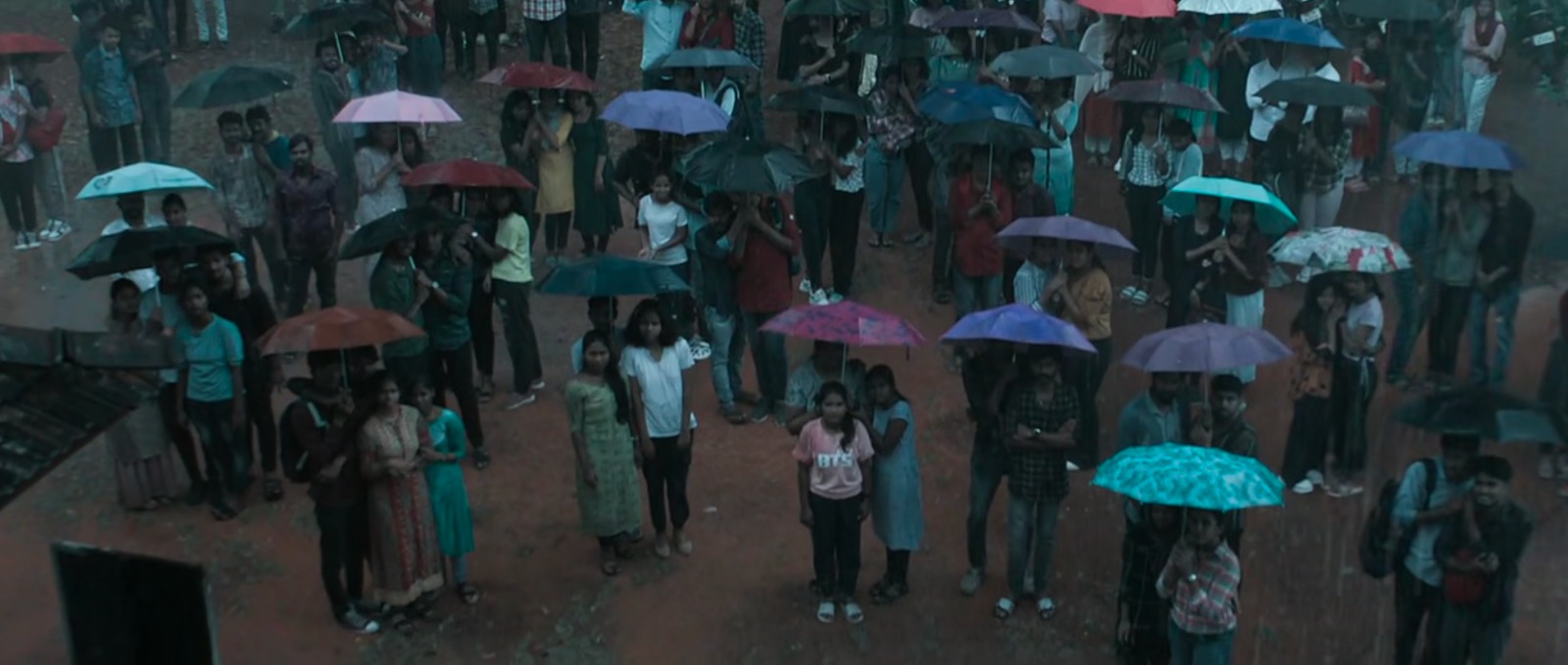
Villages have begun almost submerging, with people losing hope in the government as harrowing scenes of people being evacuated from their homes, left at relief camps cold, wet and without food were depicted. Anoop and others began a mission where they, on a sturdy wooden plank, helped evacuate families in danger going door-to-door, helping them all reach the relief camps.
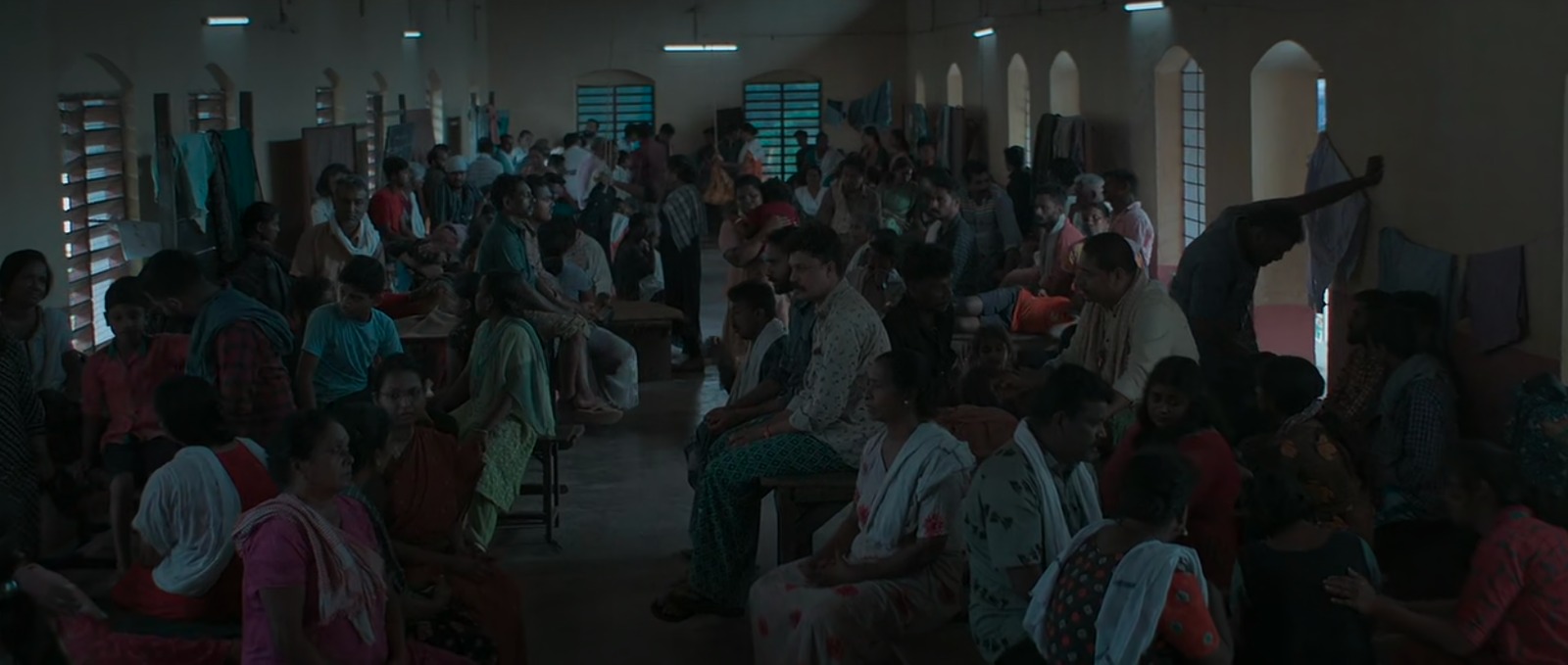
At the information center, Shaji and the others are told about a ‘Save Kerala’ Whatsapp group where information on families , localities in danger, transportation and requirement of food and other essentials, was being disseminated. The employees were asked to coordinate with the group members and admin and work towards the provision of whatever was needed.
At the time of crisis, when citizens doubted the government as they sat in radio silence over the gradual destruction of the state, the fisherfolk community spear-headed by Mathachan, with the blessings of the local Priest decided to start a rescue mission. They gathered their sturdy boats, launched them onto goods trucks and went about in different towns to rescue people. This sheds light on the fact that there is not just one hero, there were many. The entire fisherfolk community stood strong to help those in need, putting their own lives at risk, at the time that the government didn’t bat an eyelid.
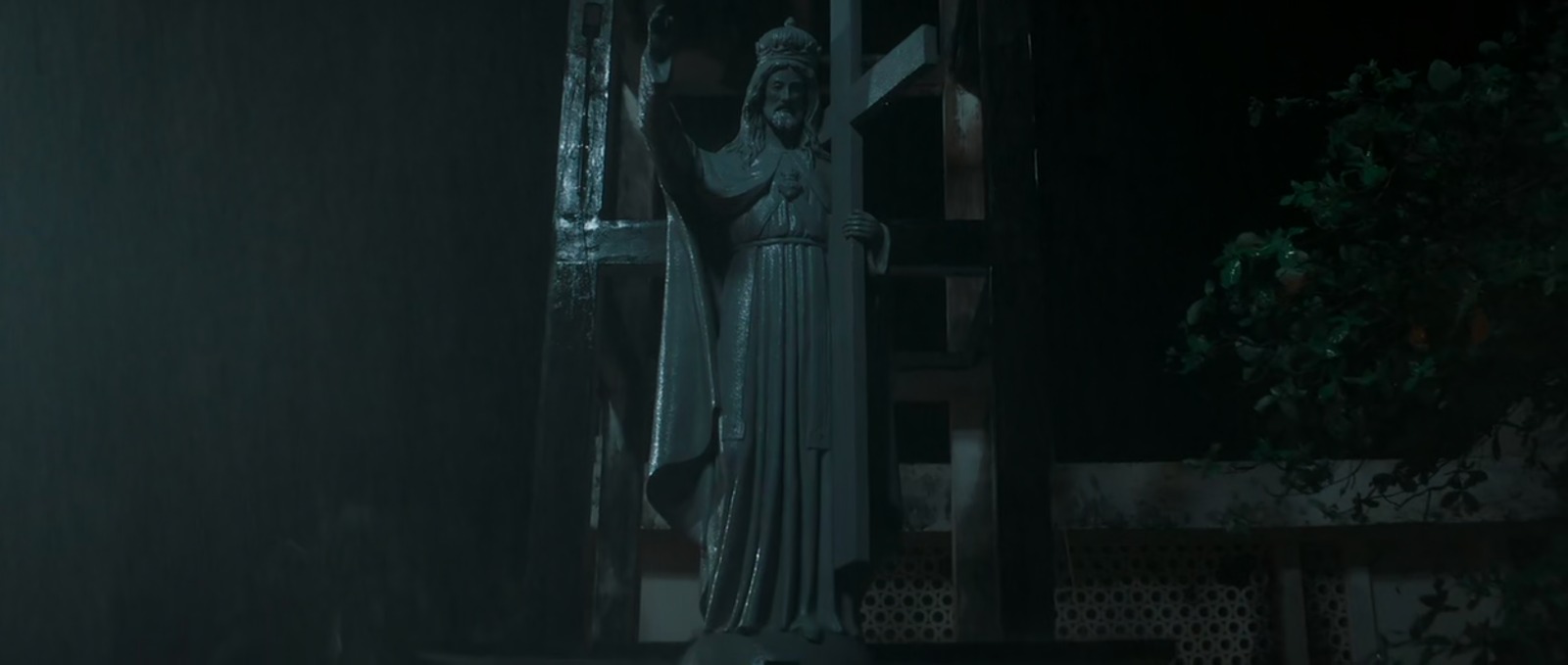
In a discussion between Shaji and his superior, it was said that it’s funny how Kerala is called ‘God’s Own Country’ and is now suffering almost as if it has faced hell. Shaji can be heard saying that “earlier, rains had a soothing effect on our minds. But now, seeing these rains, all I want is for them to stop.”
Throughout, heart-wrenching real life scenes from the 2018 devastation were displayed on screen, where people can be seen evacuating the elderly, the pregnant and the children in large utensils, wooden planks and whatever they could find. Contacting the army and the military to air drip essentials and help those severely affected became a need of the hour, something that is being discussed at the CMO. However, help could arrive only the next day, and the long night had to be faced by the citizens.
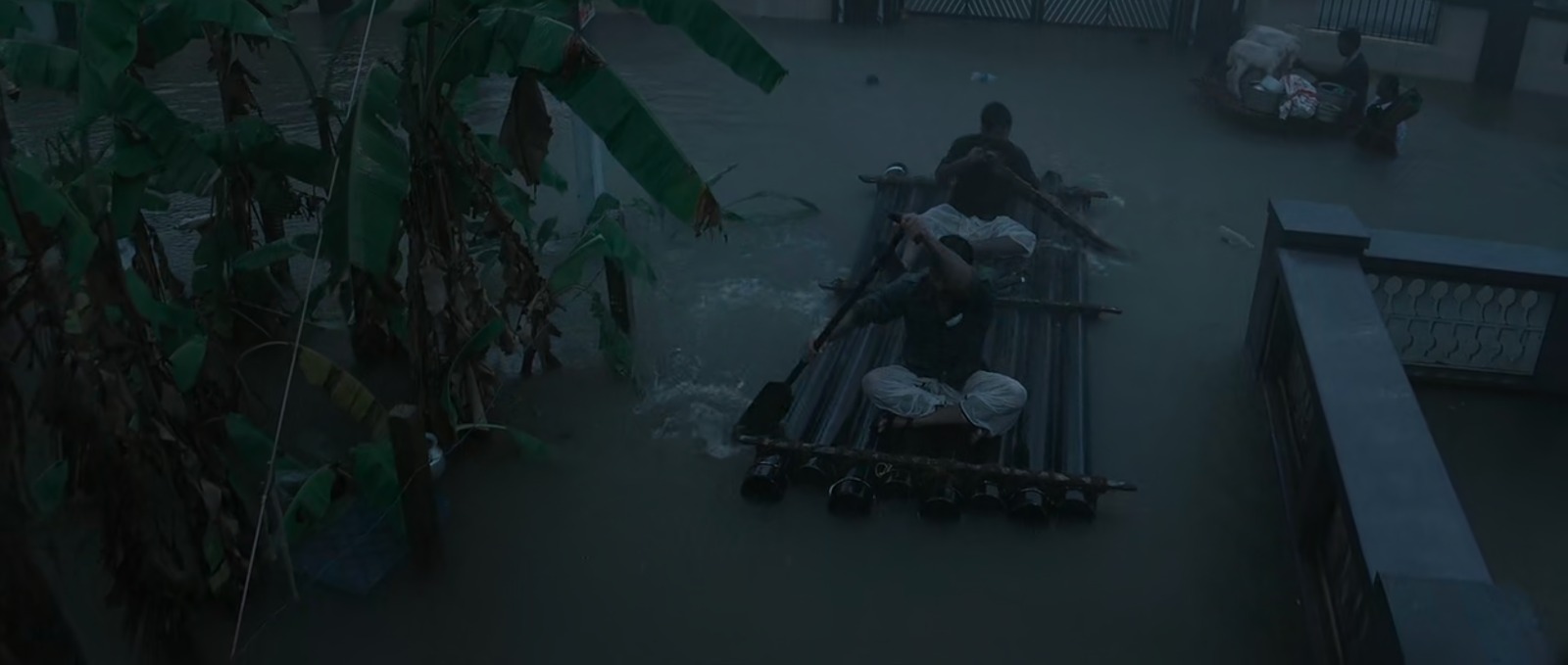
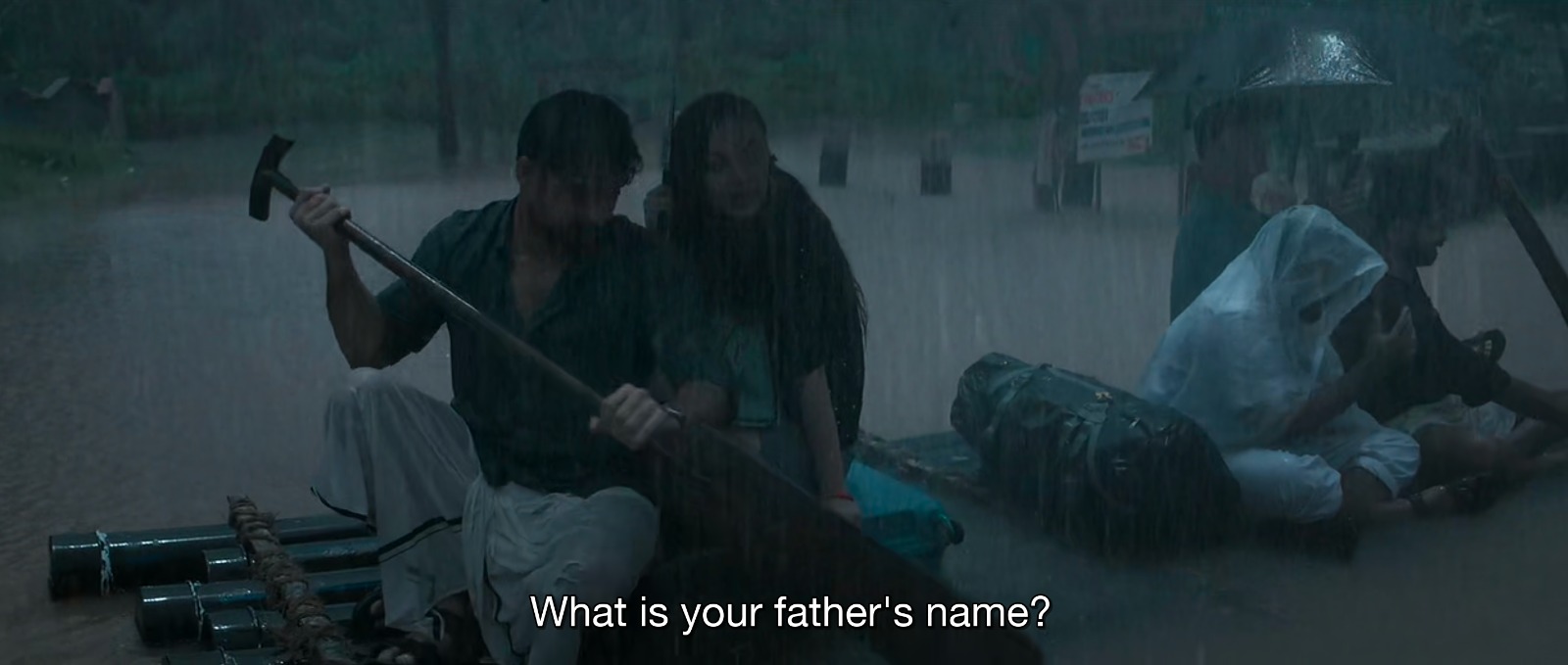
Everyone is a Hero
The Indian Army helps airlift a pregnant woman from the relief camp, to help her reach the hospital for delivery. Anoop tries to get as many people out of danger as possible. However, the plight of one family deeply impacted me. The family of Varghese, whose son is mentally challenged, their house was completely submerged in the water, with the family hanging onto the roof bars (literally) to keep themselves afloat as the entrance to their home was jarred by a fallen tree, and immense water seeped into their house from their back door. Anoop manages to rescue them in time, however, Bhasi Chetta, who was left behind up the hill was completely forgotten about.
The quintessential hero Anoop, lost his life trying to save Bhasi Chetta, who was alive and healthy, can be seen sitting at Anoop’s memorial. Anoop drowned to death as he was unable to get his leg out of the space between the boulder where it was stuck. These are the real heroes of the story.
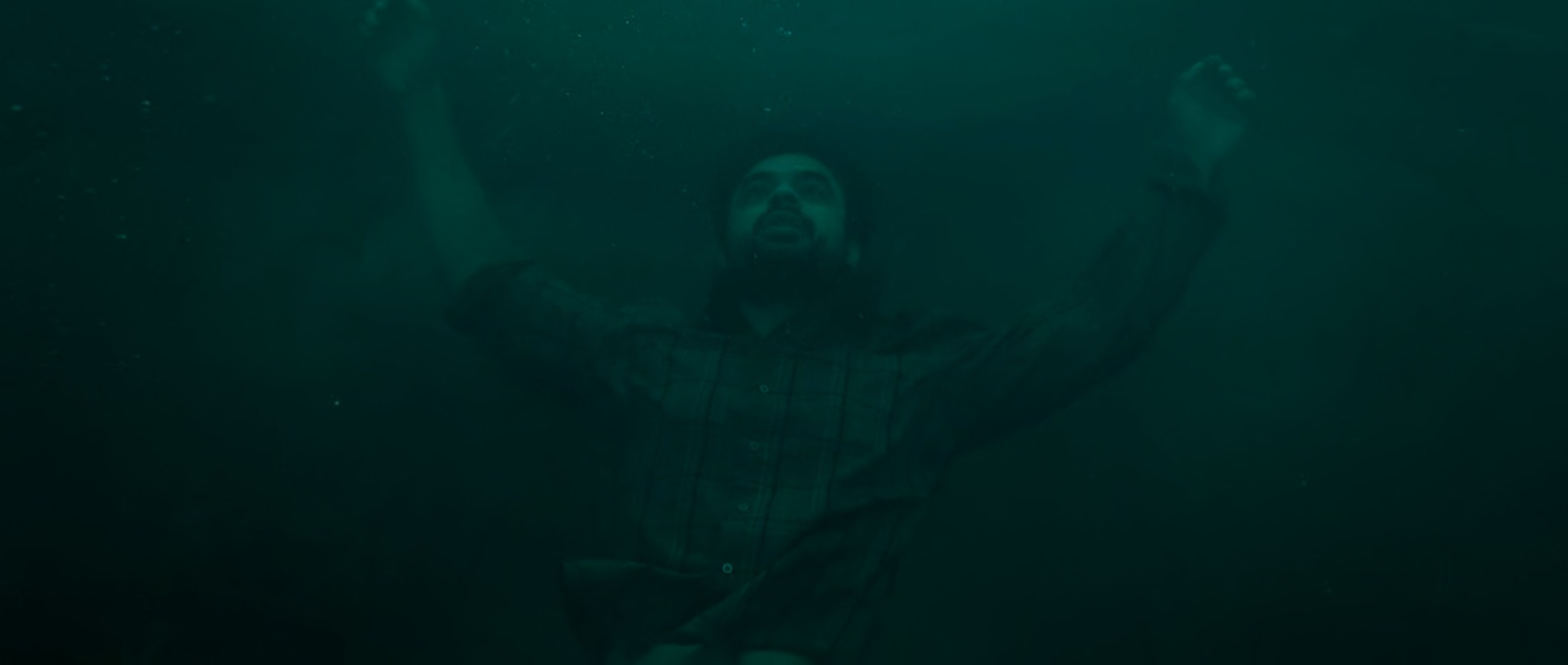
We thank the Army, the SDRF, the NDRF and the police forces because it is their duty, as they swear by their uniform, to protect all citizens of the nation they are serving. However, it was revealed in this film that the real heroes were the citizens, who responded in time of crisis. They could have waited for the ‘protectors of the state’ to act, to ‘help’ them out but did not as in times of crisis, when faced with a life-or-death situation, one only can think about survival as time is of essence and is the enemy as well, setting quite a paradox there.
The title of the film is justified here as it eventually became a ‘to each their own’ situation. Everybody at that time was a hero, it wasn’t just Anoop or Mathachan, but every single person. The saying that goes ‘Not all heroes wear capes’ stood true in this case. Nixon ultimately joins his family and helps rescue people, with pride as a fisherman. They do not let Mathachan death put them down. The family of Nixon’;s love interest, who had insured Mathachan and his entire family, were seen saluting Mathachan, as a gesture of gratitude for helping save them. Anoop died a martyr, as is the way a true soldier passes. He may have defected from the Army in fear, after witnessing the bloodbath there but that could have been nothing compared to what he witnessed in those last few days of heavy downpour and heavy despair. He truly died a savior, and hence his memorial was placed beside the Mary Matha (transl. Mother Mary) ship that helped rescue all citizens, which was now made into a monument for all to see as the village of Aruvikulam resurrects after the devastation. Mary Matha stood as the power of all Malayalis and a reminder of who the real heroes were: the ones scorned, insulted and looked down upon.
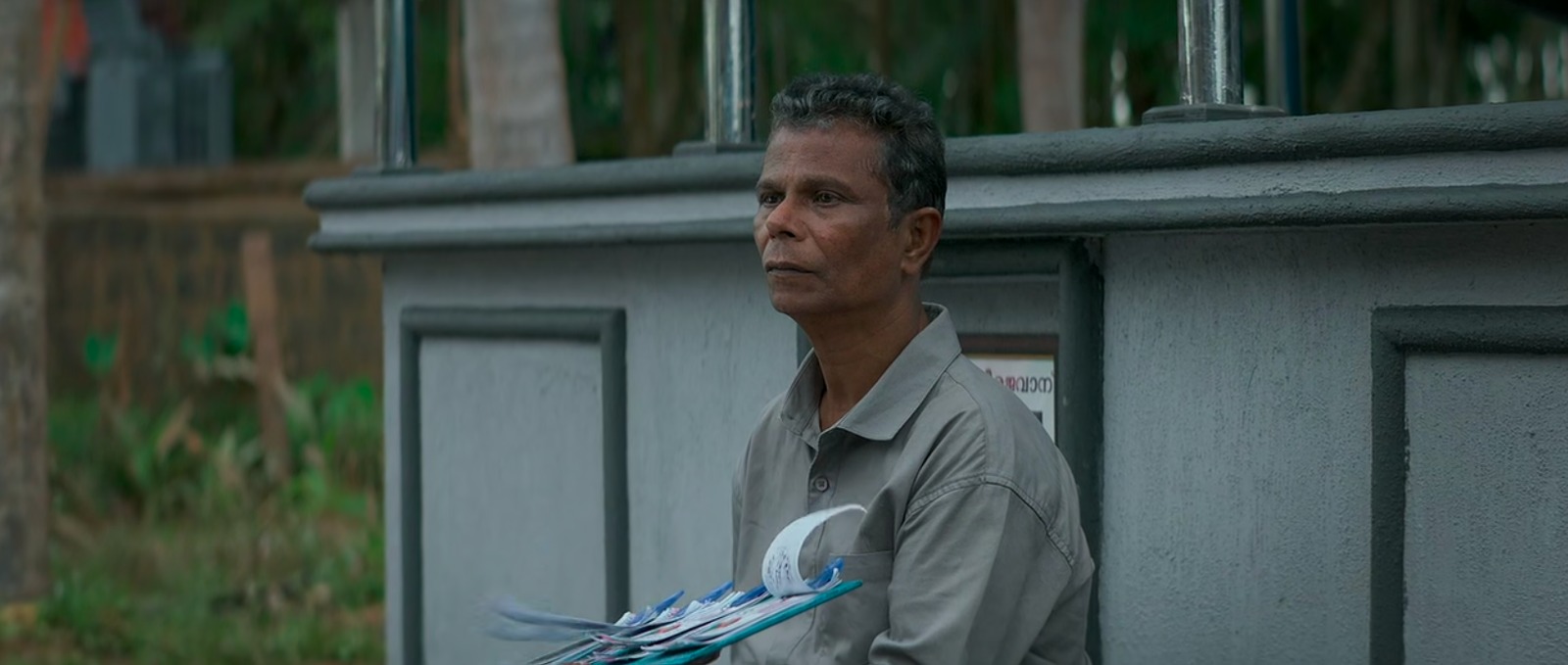

Towards the end of the film, the daughter of the pregnant woman helped by the Air Force thanks the forces creating a THANK YOU using white cloth as a gesture of gratitude for all they did for her mother and her newborn sibling. Late action but definitely not inaction, by the government, although criticized by people, but they still were appreciative of Kerala CM’s post-flood initiatives, as well as provision of essentials and the help provided by the Army and the Air Force at the time of crisis.
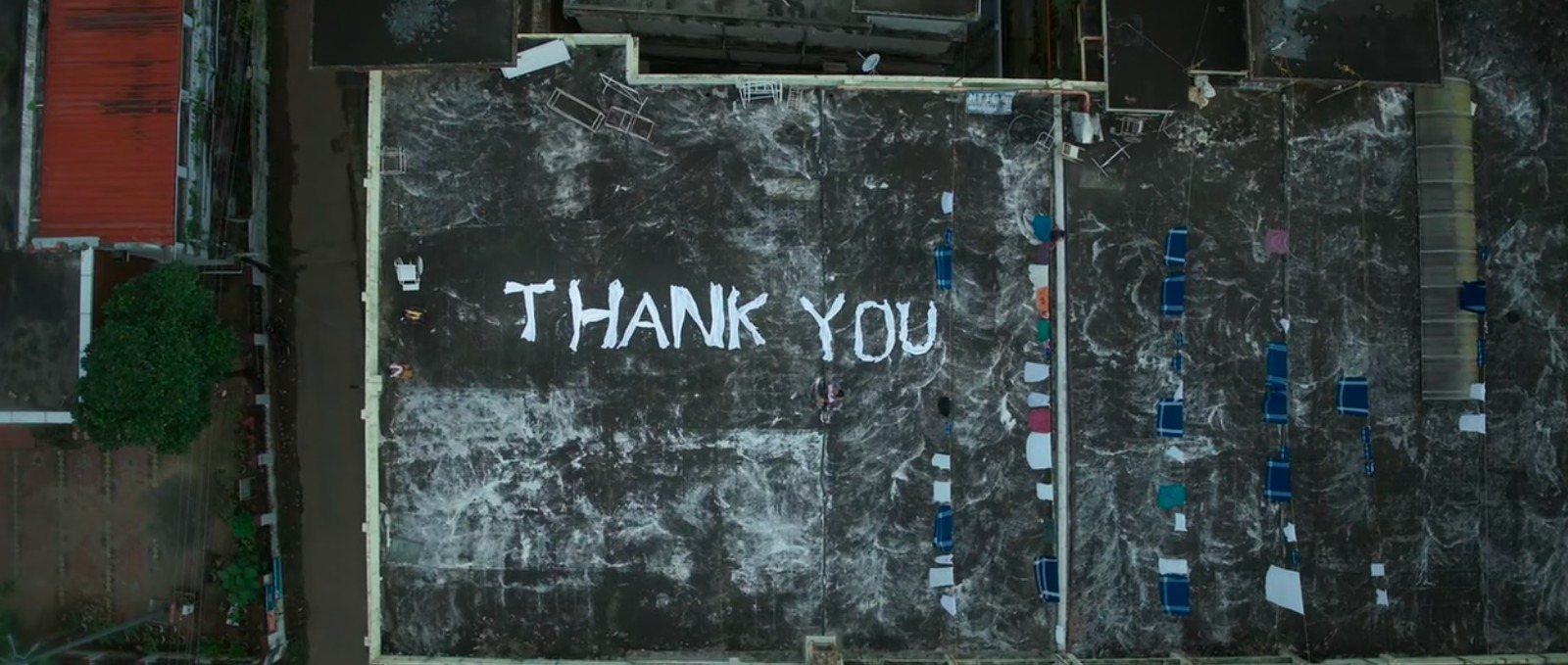
As the state is shown to be recovering from the crisis, towards the end, the song Innithile talks about a new start, a fresh start with the sun shining and a cheerful day beginning. This is symbolic of the state’s post-flood recovery operations with the right care and resources being offered to those who suffered and arrangements for their stay are being made by the administration.
An account of the 2018 ‘Flood of the Century’: facts and facets
The 2018 floods in Kerala became a watershed moment in the state’s history as it raised several questions regarding the state’s response to disasters, river and dam management systems and how they are severely lacking at the moment, and the quality of weather alerts. August 2018 was the dreaded month when the Nootandile Pralayam began as it claimed over 480 lives, left over 5 million injured and affected and caused extensive damages to homes, panchayat office, government offices, paddy fields, and loss in livestock.
According to a report submitted by the State Relief Commissioner of the State Disaster Management Authority (SDMA) in September 2018, Kerala received over 821 mm rainfall against a normal amount of 419.3 mm between 1st and 30th Aug 2018. Extreme rainfall hit North Kerala between 8 and 10th Aug and between 15-17th Aug in South Kerala. According to SDRF, IMD had issued red alerts to only 4 districts, whereas they should have issued it to all 14 districts.
On the basis of a second Report by the National Institute of Disaster Management, rainfall till the end of july was at 857.4 mm and all 35 major reservoirs were close to the FRL state (Full Reservoir Level). There was no way to accommodate the excess water in the reservoir, due to which they had to be released onto the catchment areas downstream, which led to the overflowing of river banks and finally caused widespread Deluge.
Overall, according to the SDMA report, 9,500 kilometers of roads were destroyed, over 10,000 houses fully damaged, 99,000 partly damaged and over 65,000 hectares of land inundated for days. In the aftermath of the flood, Kerala CM Pinarayi Vijayan-led govt announced the RKI (Rebuild Kerala Initiative), a major policy framework to help prepare the state for future disasters.
According to the CM, the core aim was to rebuild the state but from the perspective of climate resilience — from establishing ‘civil defense forces’ to strengthening wetland monitoring mechanisms to a central command center for reservoir management. One major issue that was used to criticize the government then was the issue of improper dam management, which many believe to have accentuated the deluge. According to a 2021 report by Comptroller and Auditor-General of India, the communication infrastructure was not functional in several areas and govt offices during the floods and the authorities responsible had failed to issue mandatory alerts or warnings regarding the deteriorating rainfall situation.
These facts have been presented so as to get a better insight to the extent to which damages were caused, all due to a mere mismanagement. However, the damages faced by the people on ground is far worse than one can read about or watch or imagine, as they will be carrying these horrific memories with them forever.
Closing remarks
To conclude, this film deserves an Oscar as much as the likes of Rocky aur Rani kii Prem Kahaani doesn’t deserve to be considered as an official entry. India has submitted several files for the Academy Awards since 1957, for the category of the ‘Academy Award for the Best International Feature Film’, with Mother India as the first submission in 1957, that also was nominated for the Award.
2018: everyone’s a hero was chosen for its relevance to the ongoing Climate Change issue and the dangers associated with it. Now how does the submission system really work?
Firstly, a committee is appointed by the Film Federation of India (FFI) to choose one film among those released that year to be submitted as India’s official entry as the nomination for the Best Foreign Language Film, and the one chosen is carried out a by ja jury established by FFI, who is screened the potential options for that year and send their chosen title ahead to the Academy, who are then screened the country’s chosen movie for their judgements on it. So far, three Indian entries have been nominated for the award: Mother India (1957), Salaam Bombay! (1988) and Lagaan (2001). As of last year, Chello Show, a Gujarati film was submitted as India’s official entry for 2022.
And this time, the submission of 2018 is justified and it deserves to win for all its grit, dialogues, portrayal of facts and reality and presenting the right mix of hope and criticism leveled against the government amid the crisis. It gives one a chilling reminder, especially to those who have witnessed the disaster at hand of the power Mother Nature wields and how it might only get worse if we simply neglect the dangers and impact of Climate Change.
Touching upon a multitude of relevant social, environmental and political issues, this film is a must-watch and I implore you all to give it a watch. It’s available to stream on SonyLIV.

